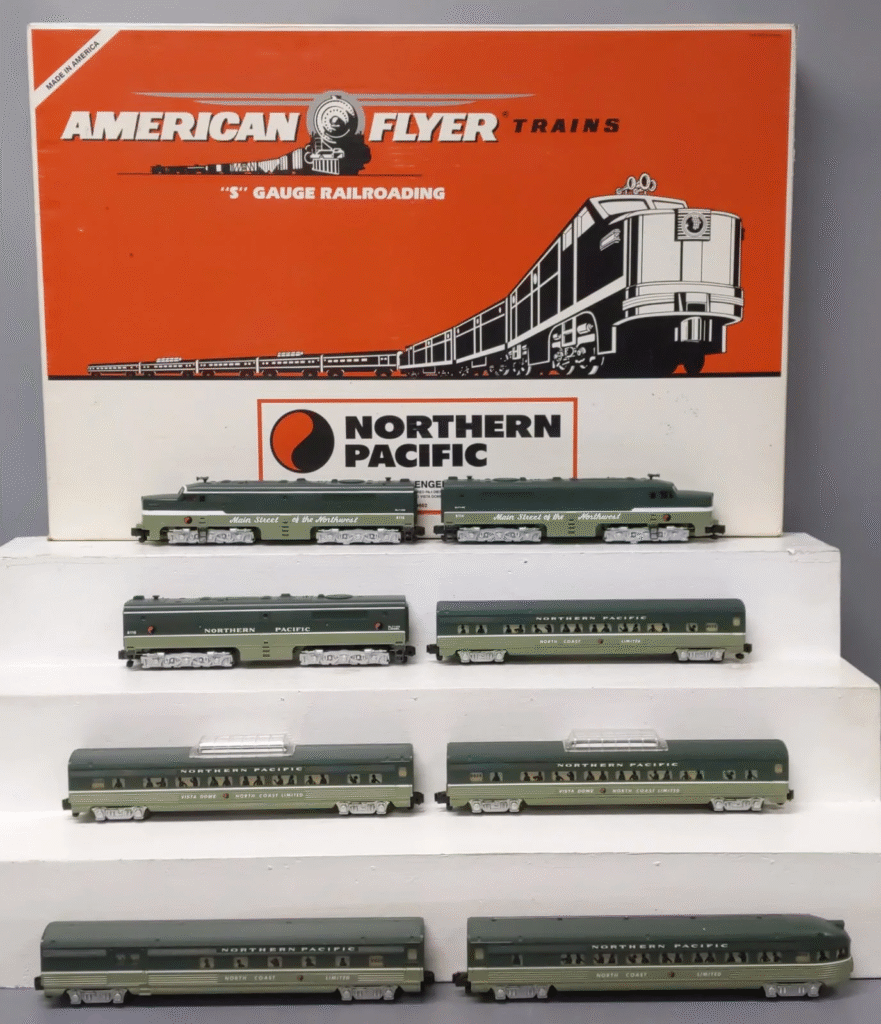
Model railroading has long been more than just a hobby—it is a celebration of engineering, nostalgia, and creativity. Among the many iconic brands that have shaped this pastime, American Flyer electric trains stand out for their innovation, quality, and historical significance. From the early 20th century to the modern era, American Flyer has played a pivotal role in defining what model railroading could be. This article explores the technological advancements introduced by American Flyer, highlighting their impact on enthusiasts, collectors, and the model train industry as a whole.
The Birth of American Flyer
American Flyer trains trace their origins to the early 1900s when the A.C. Gilbert Company began producing toys that captured the imagination of children and adults alike. Initially, American Flyer trains were crafted with a focus on durability and realism, setting them apart from other toy trains of the time. While early models relied on wind-up mechanisms and simple mechanical motion, the company soon recognized the potential of electricity in enhancing the model railroad experience.
The Introduction of Electric Locomotives
One of the most groundbreaking innovations in American Flyer trains was the introduction of electric locomotives. Unlike wind-up or clockwork engines, electric trains offered continuous, smooth operation powered by electricity supplied through metal tracks. This innovation allowed for longer runs, higher speeds, and more realistic operation, creating a new standard for model railroading.
The electric locomotives also introduced the concept of directional control, allowing the train to reverse and navigate complex layouts with ease. For hobbyists, this meant that train operation was no longer limited to simple forward-and-back movements. Instead, it enabled the creation of intricate layouts, complete with sidings, switches, and multiple trains running simultaneously.
Technological Advancements in Track and Power Systems
Electric operation required advancements in track and power systems, and American Flyer rose to the challenge. Unlike the standard three-rail systems used by some competitors, American Flyer employed a two-rail S-Gauge system. This approach more closely mimicked real-world railroad tracks, enhancing both the visual authenticity and electrical efficiency of the trains. The S-Gauge system allowed for reliable current flow, which was essential for smooth and consistent operation of electric locomotives.
Additionally, American Flyer developed innovative transformers and controllers that allowed hobbyists to adjust train speed and power. Early models featured simple on/off transformers, but over time, more sophisticated variable voltage and speed controllers emerged. These tools not only improved performance but also made operating multiple trains on a single layout easier and more enjoyable.
Realism and Authenticity: A Hallmark of American Flyer Electric Trains
American Flyer has always emphasized realism and authenticity, which is particularly evident in its electric train models. Locomotives were modeled after actual trains from the mid-20th century, including steam engines and diesel locomotives. Attention to detail extended to rolling stock, with passenger cars, freight cars, and cabooses featuring realistic paint schemes, decals, and fine detailing.
Electric operation enhanced this realism. With consistent power delivery, trains could run at scale speeds appropriate for their size, and lighting systems in passenger cars could be powered directly by the track current. Some models even incorporated operating features such as smoke generators and sound effects, bringing the model railroad to life in ways that wind-up trains never could.
Expanding the Hobby: Layouts and Accessories
The introduction of electric locomotives transformed the American Flyer from a toy into a sophisticated hobby. Electric trains encouraged hobbyists to create expansive layouts, complete with bridges, tunnels, stations, and landscapes. Because electric operation allowed trains to run continuously without constant manual winding, enthusiasts could design complex track plans that mirrored real railroads.
American Flyer also produced an extensive range of accessories that complemented electric trains. Signals, crossings, lights, and automated switches became part of the ecosystem, enabling hobbyists to simulate real-world train operations. This emphasis on modularity and expandability helped American Flyer maintain its popularity during the golden age of model railroading in the 1940s and 1950s.
Impact on the Model Train Industry
The technological innovations introduced by American Flyer electric trains had a profound effect on the model train industry. The shift from wind-up to electric operation influenced other manufacturers to explore similar technologies, raising the bar for quality and performance. By prioritizing realism, functionality, and innovation, American Flyer helped establish standards that are still respected by collectors and hobbyists today.
Moreover, the company’s commitment to authenticity and attention to detail attracted a broader audience. Collectors valued the brand not only for its operational excellence but also for its historical accuracy and craftsmanship. This dual appeal—both as a working model and a collectible—ensured that American Flyer trains would become enduring icons in the hobby.
Collecting American Flyer Electric Trains Today
Today, American Flyer electric trains are highly sought-after by collectors. Vintage models from the 1930s to the 1960s can fetch significant prices, particularly when in excellent condition or as part of complete train sets for sale. Enthusiasts appreciate the combination of mechanical reliability, realistic design, and nostalgic value. Modern reproductions and reissues also allow new hobbyists to experience the thrill of electric train operation without sacrificing quality.
Collectors often focus on preserving and restoring vintage electric locomotives, maintaining the original motors, wheels, and electrical components. This dedication reflects the lasting influence of American Flyer’s technological innovations, which continue to inspire both operation and appreciation of model trains.
Conclusion
American Flyer electric trains played a pivotal role in shaping the golden age of model railroading. Through technological advancements such as electric locomotives, two-rail S-Gauge track systems, and realistic accessories, the brand transformed a simple toy into a sophisticated hobby that captivated generations. Electric trains brought a new level of realism, performance, and creative potential, laying the foundation for modern model railroading.
From historical collectors to new enthusiasts, American Flyer continues to symbolize innovation, quality, and the enduring magic of model trains. Its electric trains not only powered miniature locomotives—they powered an entire era of imagination, craftsmanship, and joy for hobbyists around the world.
